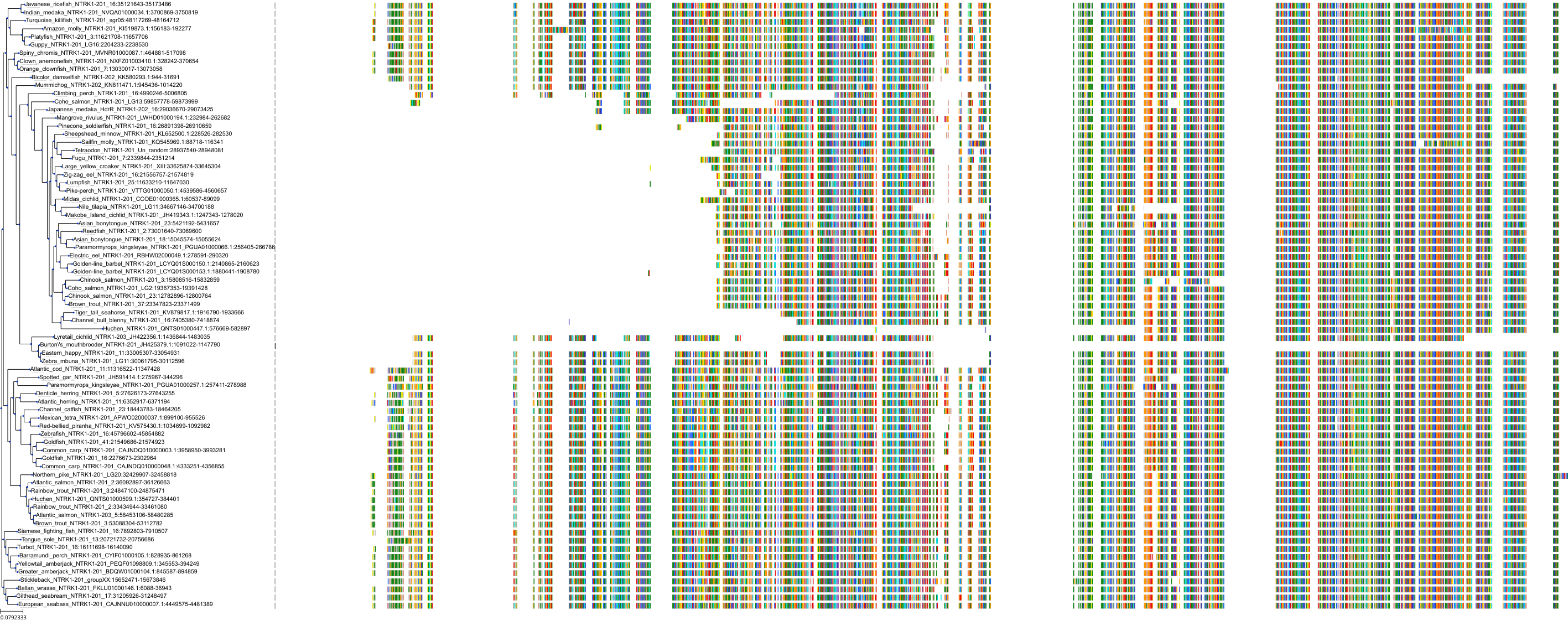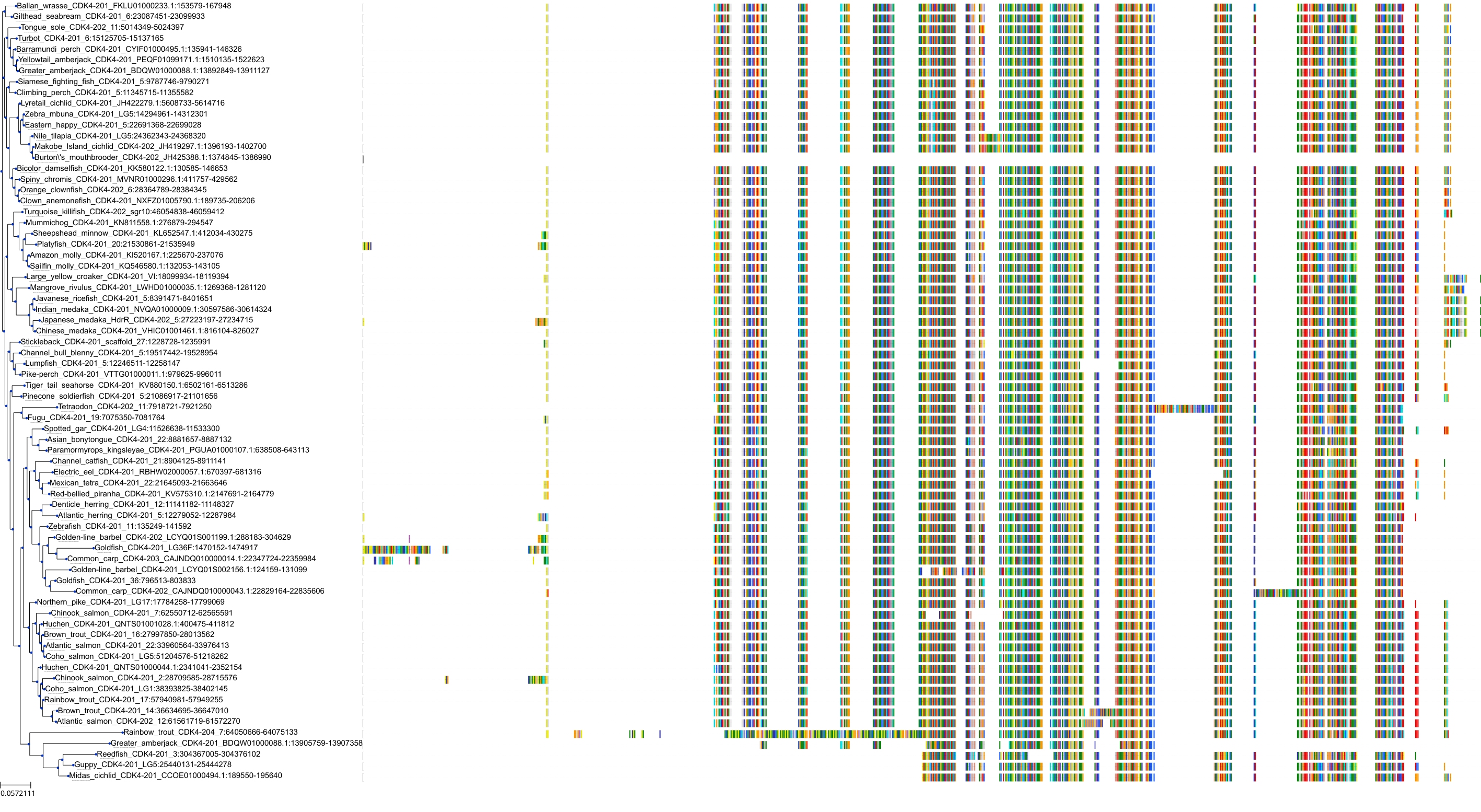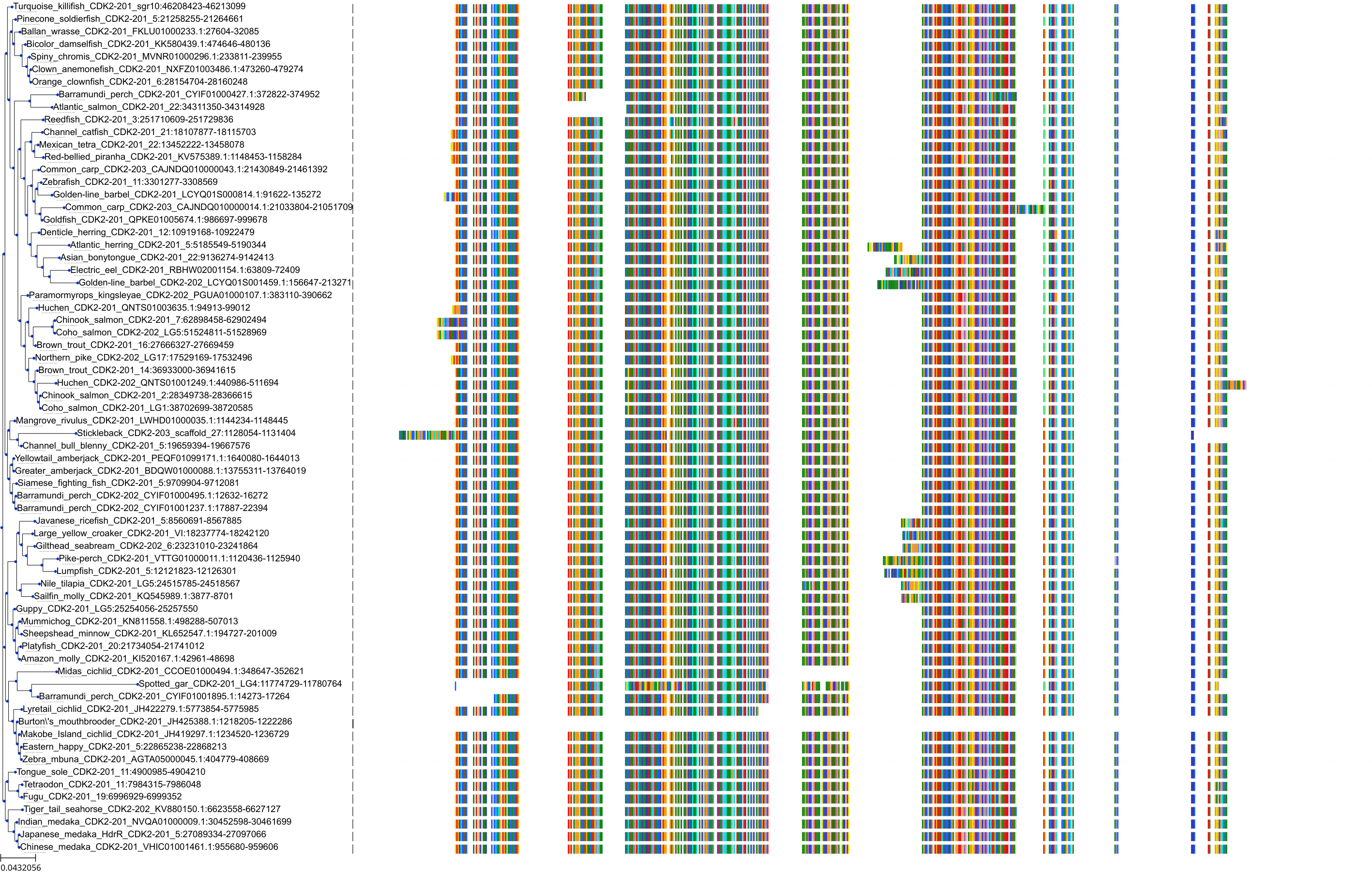|
Inhibition of CDK2/Cyclin A
|
None
|
45.0
nM
|
|
|
Antiproliferative activity against human A2780 cells after 72 hrs by cell Titer_Glo assay
|
Homo sapiens
|
200.0
nM
|
|
|
Inhibition of CDK4/Cyclin D1
|
None
|
160.0
nM
|
|
|
Inhibition of CDK5/p35
|
None
|
265.0
nM
|
|
|
Inhibition of CDK2/Cyclin E
|
None
|
363.0
nM
|
|
|
Inhibition of CDK1/Cyclin B
|
None
|
398.0
nM
|
|
|
Inhibition of CDK7/Cyclin H
|
None
|
150.0
nM
|
|
|
Inhibition of TRKA
|
None
|
53.0
nM
|
|
|
Inhibition of LCK
|
None
|
209.0
nM
|
|
|
Inhibition of c-ABL
|
None
|
478.0
nM
|
|
|
Inhibition of PDGFR
|
None
|
579.0
nM
|
|
|
Inhibition of C-KIT
|
None
|
668.0
nM
|
|
|
Inhibition of VEGFR3
|
None
|
920.0
nM
|
|
|
AntiTrypanosoma brucei activity T. b. brucei IC50 (uM)
|
Trypanosoma brucei
|
130.0
nM
|
|
|
AntiTrypanosoma brucei activity T. b. rhodesiense IC50 (uM)
|
Trypanosoma brucei
|
130.0
nM
|
|
|
AntiLeishmania activity L. infantum (macrophages) IC50 (uM)
|
Leishmania infantum
|
850.0
nM
|
|
|
Kinobeads (epsilon), multiple immobilized ATP-competitive broad spectrum kinase inhibitors, used to assess residual binding of ~300 proteins simultaneously from cell lysate in the presence of a compound. Quantitative readout performed by mass spectrometry.
|
Homo sapiens
|
477.0
nM
|
|
|
Kinobeads (epsilon), multiple immobilized ATP-competitive broad spectrum kinase inhibitors, used to assess residual binding of ~300 proteins simultaneously from cell lysate in the presence of a compound. Quantitative readout performed by mass spectrometry.
|
Homo sapiens
|
685.0
nM
|
|
|
Kinobeads (epsilon), multiple immobilized ATP-competitive broad spectrum kinase inhibitors, used to assess residual binding of ~300 proteins simultaneously from cell lysate in the presence of a compound. Quantitative readout performed by mass spectrometry.
|
Homo sapiens
|
526.0
nM
|
|
|
Kinobeads (epsilon), multiple immobilized ATP-competitive broad spectrum kinase inhibitors, used to assess residual binding of ~300 proteins simultaneously from cell lysate in the presence of a compound. Quantitative readout performed by mass spectrometry.
|
Homo sapiens
|
739.0
nM
|
|
|
Kinobeads (epsilon), multiple immobilized ATP-competitive broad spectrum kinase inhibitors, used to assess residual binding of ~300 proteins simultaneously from cell lysate in the presence of a compound. Quantitative readout performed by mass spectrometry.
|
Homo sapiens
|
285.0
nM
|
|
|
Kinobeads (epsilon), multiple immobilized ATP-competitive broad spectrum kinase inhibitors, used to assess residual binding of ~300 proteins simultaneously from cell lysate in the presence of a compound. Quantitative readout performed by mass spectrometry.
|
Homo sapiens
|
8.0
nM
|
|
|
Kinobeads (epsilon), multiple immobilized ATP-competitive broad spectrum kinase inhibitors, used to assess residual binding of ~300 proteins simultaneously from cell lysate in the presence of a compound. Quantitative readout performed by mass spectrometry.
|
Homo sapiens
|
18.0
nM
|
|
|
Kinobeads (epsilon), multiple immobilized ATP-competitive broad spectrum kinase inhibitors, used to assess residual binding of ~300 proteins simultaneously from cell lysate in the presence of a compound. Quantitative readout performed by mass spectrometry.
|
Homo sapiens
|
995.0
nM
|
|
|
Kinobeads (epsilon), multiple immobilized ATP-competitive broad spectrum kinase inhibitors, used to assess residual binding of ~300 proteins simultaneously from cell lysate in the presence of a compound. Quantitative readout performed by mass spectrometry.
|
Homo sapiens
|
236.0
nM
|
|
|
Kinobeads (epsilon), multiple immobilized ATP-competitive broad spectrum kinase inhibitors, used to assess residual binding of ~300 proteins simultaneously from cell lysate in the presence of a compound. Quantitative readout performed by mass spectrometry.
|
Homo sapiens
|
366.0
nM
|
|
|
Kinobeads (epsilon), multiple immobilized ATP-competitive broad spectrum kinase inhibitors, used to assess residual binding of ~300 proteins simultaneously from cell lysate in the presence of a compound. Quantitative readout performed by mass spectrometry.
|
Homo sapiens
|
105.0
nM
|
|
|
Kinobeads (epsilon), multiple immobilized ATP-competitive broad spectrum kinase inhibitors, used to assess residual binding of ~300 proteins simultaneously from cell lysate in the presence of a compound. Quantitative readout performed by mass spectrometry.
|
Homo sapiens
|
661.0
nM
|
|
|
Kinobeads (epsilon), multiple immobilized ATP-competitive broad spectrum kinase inhibitors, used to assess residual binding of ~300 proteins simultaneously from cell lysate in the presence of a compound. Quantitative readout performed by mass spectrometry.
|
Homo sapiens
|
147.0
nM
|
|
|
Kinobeads (epsilon), multiple immobilized ATP-competitive broad spectrum kinase inhibitors, used to assess residual binding of ~300 proteins simultaneously from cell lysate in the presence of a compound. Quantitative readout performed by mass spectrometry.
|
Homo sapiens
|
767.0
nM
|
|
|
Kinobeads (epsilon), multiple immobilized ATP-competitive broad spectrum kinase inhibitors, used to assess residual binding of ~300 proteins simultaneously from cell lysate in the presence of a compound. Quantitative readout performed by mass spectrometry.
|
Homo sapiens
|
329.0
nM
|
|
|
Kinobeads (epsilon), multiple immobilized ATP-competitive broad spectrum kinase inhibitors, used to assess residual binding of ~300 proteins simultaneously from cell lysate in the presence of a compound. Quantitative readout performed by mass spectrometry.
|
Homo sapiens
|
54.0
nM
|
|
|
Kinobeads (epsilon), multiple immobilized ATP-competitive broad spectrum kinase inhibitors, used to assess residual binding of ~300 proteins simultaneously from cell lysate in the presence of a compound. Quantitative readout performed by mass spectrometry.
|
Homo sapiens
|
3.0
nM
|
|
|
Kinobeads (epsilon), multiple immobilized ATP-competitive broad spectrum kinase inhibitors, used to assess residual binding of ~300 proteins simultaneously from cell lysate in the presence of a compound. Quantitative readout performed by mass spectrometry.
|
Homo sapiens
|
863.0
nM
|
|
|
Kinobeads (epsilon), multiple immobilized ATP-competitive broad spectrum kinase inhibitors, used to assess residual binding of ~300 proteins simultaneously from cell lysate in the presence of a compound. Quantitative readout performed by mass spectrometry.
|
Homo sapiens
|
291.0
nM
|
|
|
Kinobeads (epsilon), multiple immobilized ATP-competitive broad spectrum kinase inhibitors, used to assess residual binding of ~300 proteins simultaneously from cell lysate in the presence of a compound. Quantitative readout performed by mass spectrometry.
|
Homo sapiens
|
681.0
nM
|
|
|
Kinobeads (epsilon), multiple immobilized ATP-competitive broad spectrum kinase inhibitors, used to assess residual binding of ~300 proteins simultaneously from cell lysate in the presence of a compound. Quantitative readout performed by mass spectrometry.
|
Homo sapiens
|
625.0
nM
|
|
|
Kinobeads (epsilon), multiple immobilized ATP-competitive broad spectrum kinase inhibitors, used to assess residual binding of ~300 proteins simultaneously from cell lysate in the presence of a compound. Quantitative readout performed by mass spectrometry.
|
Homo sapiens
|
212.0
nM
|
|
|
Kinobeads (epsilon), multiple immobilized ATP-competitive broad spectrum kinase inhibitors, used to assess residual binding of ~300 proteins simultaneously from cell lysate in the presence of a compound. Quantitative readout performed by mass spectrometry.
|
Homo sapiens
|
350.0
nM
|
|
|
Kinobeads (epsilon), multiple immobilized ATP-competitive broad spectrum kinase inhibitors, used to assess residual binding of ~300 proteins simultaneously from cell lysate in the presence of a compound. Quantitative readout performed by mass spectrometry.
|
Homo sapiens
|
512.0
nM
|
|
|
Kinobeads (epsilon), multiple immobilized ATP-competitive broad spectrum kinase inhibitors, used to assess residual binding of ~300 proteins simultaneously from cell lysate in the presence of a compound. Quantitative readout performed by mass spectrometry.
|
Homo sapiens
|
143.0
nM
|
|
|
Kinobeads (epsilon), multiple immobilized ATP-competitive broad spectrum kinase inhibitors, used to assess residual binding of ~300 proteins simultaneously from cell lysate in the presence of a compound. Quantitative readout performed by mass spectrometry.
|
Homo sapiens
|
135.0
nM
|
|
|
Kinobeads (epsilon), multiple immobilized ATP-competitive broad spectrum kinase inhibitors, used to assess residual binding of ~300 proteins simultaneously from cell lysate in the presence of a compound. Quantitative readout performed by mass spectrometry.
|
Homo sapiens
|
110.0
nM
|
|
|
Kinobeads (epsilon), multiple immobilized ATP-competitive broad spectrum kinase inhibitors, used to assess residual binding of ~300 proteins simultaneously from cell lysate in the presence of a compound. Quantitative readout performed by mass spectrometry.
|
Homo sapiens
|
266.0
nM
|
|
|
Kinobeads (epsilon), multiple immobilized ATP-competitive broad spectrum kinase inhibitors, used to assess residual binding of ~300 proteins simultaneously from cell lysate in the presence of a compound. Quantitative readout performed by mass spectrometry.
|
Homo sapiens
|
342.0
nM
|
|
|
Kinobeads (epsilon), multiple immobilized ATP-competitive broad spectrum kinase inhibitors, used to assess residual binding of ~300 proteins simultaneously from cell lysate in the presence of a compound. Quantitative readout performed by mass spectrometry.
|
Homo sapiens
|
900.0
nM
|
|
|
Kinobeads (epsilon), multiple immobilized ATP-competitive broad spectrum kinase inhibitors, used to assess residual binding of ~300 proteins simultaneously from cell lysate in the presence of a compound. Quantitative readout performed by mass spectrometry.
|
Homo sapiens
|
13.0
nM
|
|
|
Antiproliferative activity against human MDA-MB-231 cells measured after 72 hrs by CellTiter-Blue assay
|
Homo sapiens
|
310.0
nM
|
|
|
Antiproliferative activity against human MM1S cells measured after 72 hrs by CellTiter-Blue assay
|
Homo sapiens
|
720.0
nM
|
|
|
Binding affinity to recombinant human N-terminal His6-tagged Wee1 kinase domain (291 to 575 residues) expressed in Escherichia coli BL21 (DE3) by isothermal titration calorimetry
|
Homo sapiens
|
13.6
nM
|
|
|
Binding affinity to recombinant human N-terminal His6-tagged Wee2 kinase domain (202 to 492 residues) expressed in Escherichia coli BL21 (DE3) by isothermal titration calorimetry
|
Homo sapiens
|
26.6
nM
|
|
|
Binding affinity to recombinant human N-terminal His6-tagged Myt1 kinase domain (75 to 361 residues) by isothermal titration calorimetry
|
Homo sapiens
|
990.0
nM
|
|
|
Inhibition of CDK2 (unknown origin)
|
Homo sapiens
|
45.0
nM
|
|
|
Antibacterial activity against Staphylococcus aureus MRSA ATCC 43300 (CO-ADD:GP_020); MIC in CAMBH media, using NBS plates, by OD(600)
|
Staphylococcus aureus subsp. aureus
|
15.75
%
|
|
|
Antibacterial activity against Escherichia coli ATCC 25922 (CO-ADD:GN_001); MIC in CAMBH media using NBS plates, by OD(600)
|
Escherichia coli
|
10.4
%
|
|
|
Antibacterial activity against Klebsiella pneumoniae MDR ATCC 70063 (CO-ADD:GN_003); MIC in CAMBH media using NBS plates, by OD(600)
|
Klebsiella pneumoniae
|
-10.97
%
|
|
|
Antibacterial activity against Pseudomonas aeruginosa ATCC 27853 (CO-ADD:GN_042); MIC in CAMBH media using NBS plates, by OD(600)
|
Pseudomonas aeruginosa
|
5.97
%
|
|
|
Antibacterial activity against Acinetobacter baumannii ATCC 19606 (CO-ADD:GN_034); MIC in CAMBH media using NBS plates, by OD600
|
Acinetobacter baumannii
|
2.31
%
|
|
|
Antifungal activity against Candida albicans ATCC 90028 (CO-ADD:FG_001); MIC in YNB media using NBS plates, by OD630
|
Candida albicans
|
4.83
%
|
|
|
Antifungal activity against Cryptococcus neoformans H99 ATCC 208821 (CO-ADD:FG_002); MIC in YNB media using NBS plates, by Resazurin OD(600-570)
|
Cryptococcus neoformans
|
-4.76
%
|
|
|
Antiviral activity determined as inhibition of SARS-CoV-2 induced cytotoxicity of Caco-2 cells at 10 uM after 48 hours by high content imaging
|
Homo sapiens
|
44.69
%
|
|
|
Inhibition of His-tagged CDK2/cyclin E (unknown origin) expressed in Baculovirus infected Sf9 cells using histone H1 as substrate in presence of [gamma-33P]-ATP by radiometric filter binding assay
|
Homo sapiens
|
590.0
nM
|
|
|
Inhibition of GST-tagged CDK4/cyclin D1 (unknown origin) expressed in Baculovirus infected Sf9 cells using RPPTLSPIPHIPR peptide as substrate in presence of [gamma-33P]-ATP by radiometric filter binding assay
|
Homo sapiens
|
220.0
nM
|
|
|
Inhibition of GST-tagged CDK2/cyclin A2 (unknown origin) expressed in Escherichia coli using histone H1 as substrate in presence of [gamma-33P]-ATP by radiometric filter binding assay
|
Homo sapiens
|
109.0
nM
|
|
|
Inhibition of GST-tagged CDK5/p25 (unknown origin) expressed in Baculovirus infected Sf9 cells using histone H1 as substrate as substrate in presence of [gamma-33P]-ATP by radiometric filter binding assay
|
Homo sapiens
|
383.0
nM
|
|
|
Inhibition of GST-tagged CDK7/cyclinH/MAT1 (unknown origin) expressed in Baculovirus infected Sf9 cells using YSPTSPS-2 KK peptide as substrate as substrate in presence of [gamma-33P]-ATP by radiometric filter binding assay
|
Homo sapiens
|
270.0
nM
|
|
|
Inhibition of CDK2/Cyclin E (unknown origin)
|
Homo sapiens
|
5.0
nM
|
|
|
Inhibition of CDK4/Cyclin D1 (unknown origin)
|
Homo sapiens
|
100.0
nM
|
|
|
Inhibition of CDK2/Cyclin A (unknown origin)
|
Homo sapiens
|
8.0
nM
|
|
|
Inhibition of CDK1/Cyclin B (unknown origin)
|
Homo sapiens
|
9.0
nM
|
|
|
Inhibition of CDK5/p35 (unknown origin)
|
Homo sapiens
|
4.0
nM
|
|
|
Inhibition of CDK7/cyclin H (unknown origin)
|
Homo sapiens
|
150.0
nM
|
|
|
Antitrypanosomal activity against Trypanosoma brucei brucei 427 bloodstream forms after 48 hrs by resazurin dye based fluorescence assay
|
Trypanosoma brucei brucei
|
170.0
nM
|
|
|
Antitrypanosomal activity against Trypanosoma brucei brucei by pathogen box screening based assay
|
Trypanosoma brucei brucei
|
130.0
nM
|
|
|
Antitrypanosomal activity against Trypanosoma brucei brucei 427 bloodstream forms after 24 hrs by resazurin dye based fluorescence assay
|
Trypanosoma brucei brucei
|
48.0
nM
|
|
|
Antiparasitic activity against bloodstream form of Trypanosoma brucei 221 infected in mouse VSMC assessed as reduction in parasitic proliferation after 48 hrs by cell titer-glo based assay
|
Trypanosoma brucei
|
610.0
nM
|
|
|
Inhibition of GST-tagged Trypanosoma brucei ERK8 autophosphorylation expressed in Escherichia coli using myelin basic protein as substrate after 30 mins in presence of 32P-gamma-ATP by SDS-PAGE based autoradiography
|
Trypanosoma brucei
|
20.0
%
|
|
|
SARS-CoV-2 3CL-Pro protease inhibition percentage at 20µM by FRET kind of response from peptide substrate
|
Severe acute respiratory syndrome coronavirus 2
|
3.62
%
|
|
SARS-CoV-2 3CL-Pro protease inhibition percentage at 20µM by FRET kind of response from peptide substrate
|
Severe acute respiratory syndrome coronavirus 2
|
1.627
%
|
|
|
Antiviral activity determined as inhibition of SARS-CoV-2 induced cytotoxicity of VERO-6 cells at 10 uM after 48 hours exposure to 0.01 MOI SARS CoV-2 virus by high content imaging
|
Chlorocebus sabaeus
|
7.7
%
|
|
Antiviral activity determined as inhibition of SARS-CoV-2 induced cytotoxicity of VERO-6 cells at 10 uM after 48 hours exposure to 0.01 MOI SARS CoV-2 virus by high content imaging
|
Chlorocebus sabaeus
|
5.66
%
|
|
Antiviral activity determined as inhibition of SARS-CoV-2 induced cytotoxicity of VERO-6 cells at 10 uM after 48 hours exposure to 0.01 MOI SARS CoV-2 virus by high content imaging
|
Chlorocebus sabaeus
|
5.66
%
|
|
Antiviral activity determined as inhibition of SARS-CoV-2 induced cytotoxicity of VERO-6 cells at 10 uM after 48 hours exposure to 0.01 MOI SARS CoV-2 virus by high content imaging
|
Chlorocebus sabaeus
|
7.7
%
|
|
|
Growth inhibiting activity of Naegleria gruberi in vitro
|
Naegleria gruberi
|
18.3
%
|
|







































